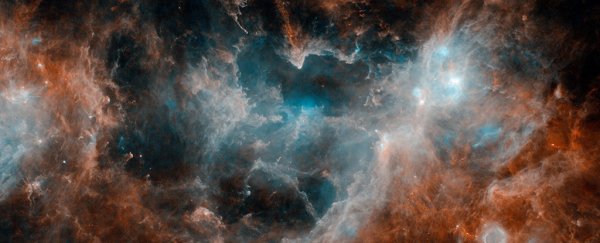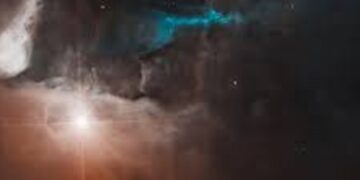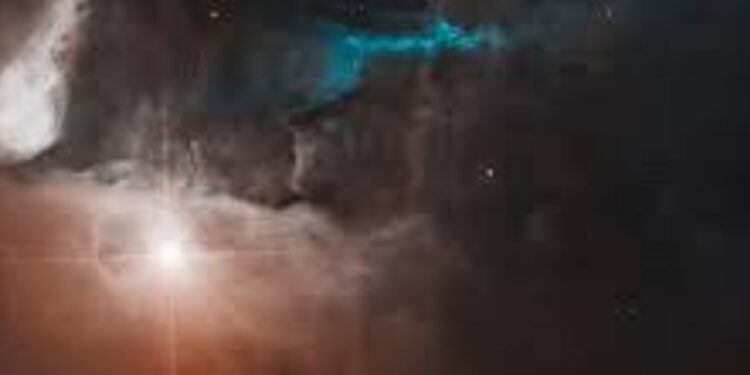Peer into the heart of a stellar nursery with the Hubble Space Telescope! This news piece takes us on a journey to witness the awe-inspiring birth of a new star, FS Tau B, and the dramatic light show that accompanies its arrival.
Unveiling the Secrets of a Stellar Nursery
The Taurus-Auriga region, roughly 450 light-years away, is a cosmic cradle teeming with activity. Here, vast clouds of gas and dust, known as molecular clouds, serve as the raw ingredients for star formation. Within these swirling nebulas, gravity takes hold, causing denser regions to collapse inwards. This dramatic dance gives rise to celestial embryos known as protostars, one of which is the emerging star FS Tau B.
Astronomers were already familiar with a binary system of infant stars, FS Tau A (Haro 6-5A), residing within the FS Tau nebula. However, Hubble’s keen eye has now confirmed the presence of a second stellar newborn, FS Tau B. This exciting discovery adds another chapter to the ongoing saga of star formation in this region.
A Dazzling Display and a Glimpse into the Future
The Hubble image unveils a breathtaking vista. FS Tau B and the binary system it shares its home with are both cloaked in a luminous veil of gas and dust. This leftover material from the nebula represents the building blocks for future planetary systems that may one day orbit these young stars.
While FS Tau B hasn’t yet reached stellar maturity, it’s actively gathering material from its surroundings, much like a cosmic toddler filling its plate at a celestial buffet. Once it accumulates enough mass, the pressure at its core will ignite a momentous process – nuclear fusion. This stellar baptism by fire marks the star’s official entry into adulthood on the main sequence, the stable phase that our own Sun has occupied for roughly 4.6 billion years.
For now, FS Tau B relies on the heat generated by its formation and ongoing material accretion to shine. However, a defining characteristic of protostars like FS Tau B is the emission of powerful jets. Imagine firehoses spewing out supercharged particles – that’s the essence of these dramatic outflows. The Hubble image captures a double-sided jet emanating from FS Tau B, with an intriguing asymmetry that hints at uneven mass distribution within the developing star.
From Protostar to Stellar Citizen: The Journey Continues
The story of FS Tau B extends beyond its classification as a protostar. It’s also considered a Herbig-Haro object. These fascinating celestial bodies are born when the powerful jets from young stars slam into surrounding gas and dust clouds at high velocities. The collisions trigger the formation of glowing regions within the nebulae, acting as colorful signposts pointing towards the presence of these nascent stars.

As FS Tau B progresses beyond the protostar stage, it will evolve into a T Tauri star. These young stellar objects represent a bridge between the fiery birth of a star and the stable existence of a main sequence star. In millions or even billions of years, FS Tau B could potentially become home to its own planetary system, carrying on the torch of star formation and illuminating the cosmos with its brilliance.
This glimpse into the stellar nursery captured by Hubble provides a window into the ongoing story of star birth. It’s a story of transformation, from swirling gas clouds to celestial powerhouses, reminding us of the majesty and dynamism of the universe.



















